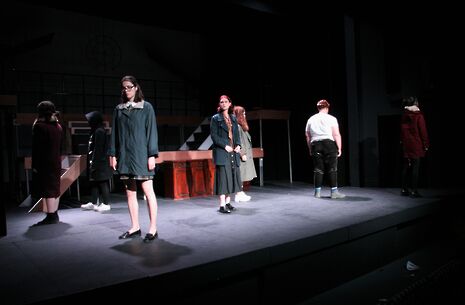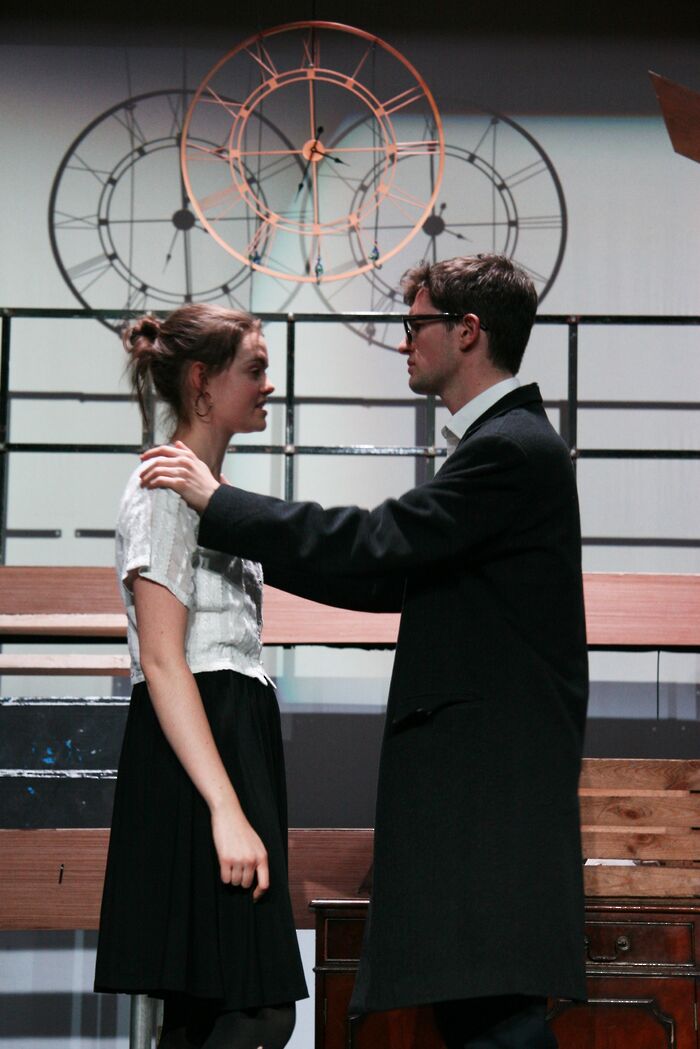LGBT+ narratives of ostracization are still relevant today
Flic Kersting responds to recent criticisms of an older LGBT+ play as being outdated, by pointing out the effects of social attitudes to LGBT+ people’s lives

Content note: this article mentions suicide, mental health, LGBT+ issues, harassment and homophobia
44% of young LGBT people have considered suicide – almost double the number of heterosexual cisgender young people in the UK. LGB+ people are 2-4 times more likely to have faced harassment in the workplace. In 2012, a study discovered 55% of LGB young people had been victims of homophobic bullying at school. 41% of those who had experienced this at some point in their lives said it had led to suicidal attempts or ideation. I could go on. While the UK has made a lot of progress regarding LGBT+ rights and treatment in recent decades, statistics like these are a harsh reminder of the reality that LGBT+ people still face exclusion and discrimination due to their sexual orientation and/or gender identity on a daily basis.
Watching The Children’s Hour this week was an important reminder of how far we have come since it was first published in 1934 – people are no longer routinely ostracised from their community if suspected of having a same-sex relationship, homosexuality is no longer a taboo subject, and employment rates for LGBT+ and heterosexual cisgender people are not significantly different. However, it was also an important reminder of how far there is left to go – many of the themes and emotions in the play resonated with me, a bisexual woman, and I know many of my LGBT+ friends felt the same.
many queer women I know who live in smaller towns or outside the UK are either unable to come out to family members because of the homophobia they will experience
The Varsity review of The Children’s Hour suggested the play wasn’t “accessible to a contemporary audience” and that it was on the wrong side of the line between invoking pathos and being melodramatic. Watching Martha (Jessica Murdoch) struggle with accepting her sexuality throughout the play, and finally breaking down when she finally admitted her feelings to childhood friend Karen (Saskia West), felt all too familiar. In this, I saw the same internal struggle, the denial, the fear of coming out to my friends (especially female friends I had feelings for) that I have myself experienced. Many LGB+ women struggle with their feelings for other women because we feel predatory or worry that our friends will no longer feel comfortable around us. This situation is further exacerbated by media representations of queer women as either overly sexual or constantly preying on their female friends.
Being ostracised from the community is no longer common in cosmopolitan UK cities such as London, but many queer women I know who live in smaller towns or outside the UK are either unable to come out to family members because of the homophobia they will experience or have been told by immediate family members that them being LGBT+ is fine ‘as long as the neighbours don’t find out’. In many cases, queerness is still seen an embarrassment, dirty laundry that needs to be kept behind closed doors. In a 2014 study, 39% of primary school teachers and 11% of secondary school teachers said their school did not allow them to teach about LGB+ issues. I experienced this firsthand at school – a society request to do a presentation about LGBT+ experiences in Uganda was denied because it was deemed ‘inappropriate’.
I found it interesting that the Varsity review notes Sayers’ portrayal of Joe, the only male character in the show, as one of the high points. While Sayers’ performance was good, I found it difficult to watch Joe and Karen interact in the second act. His lack of trust in their relationship (due to his mistaken belief that Karen and Martha had previously been lovers) echoed the misplaced fears of many heterosexual men dating bisexual or pansexual women. The scenes that moved me most were the ones where Martha and Karen or Martha and Mrs Mortar, Martha’s aunt (Elearnor Lind Booton), interacted – watching Martha try to navigate her feelings, while having to cope with so many comments about how ‘unnatural’ she was, was a difficult thing to do. This should serve to remind people that the language we use matters, as it can damage people’s lives.
The Children’s Hour was at times uncomfortable to watch. However, this was intentional: it is uncomfortable to face the fact that the UK is not as accepting a place as we often make it out to be. LGBT+ people still fear being disowned and rejected by family and friends upon coming out, are more likely to be victims of harassment, and are significantly more likely to struggle with mental health problems including suicidal thoughts. If more progress is to be made regarding these issues, it is important to face the issues directly and rather than letting portrayals of the queer experience such as this one be brushed off as ‘outdated’. This play also serves as a testament to the huge amount of (often underappreciated) female talent in Cambridge theatre, and proves that plays focusing on the experiences of LGBT+ women are still sorely needed. Calling this play “a cultural antique”, as one 1962 New York Times review did, shows the continued and wilful ignorance of those not affected by LGBT+ issues rather than proving the issues are no longer present, and this is still true of society today. Sweeping these problems aside instead of engaging with them will not stop discrimination, and The Children’s Hour was a clear reminder of the crucial work that remains to be done.
 News / Eight Cambridge researchers awarded €17m in ERC research grants27 December 2025
News / Eight Cambridge researchers awarded €17m in ERC research grants27 December 2025 News / Clare Hall spent over £500k opposing busway 24 December 2025
News / Clare Hall spent over £500k opposing busway 24 December 2025 Comment / League tables do more harm than good26 December 2025
Comment / League tables do more harm than good26 December 2025 Comment / The ‘class’ of Cambridge24 December 2025
Comment / The ‘class’ of Cambridge24 December 2025 News / Caius mourns its tree-mendous loss23 December 2025
News / Caius mourns its tree-mendous loss23 December 2025









